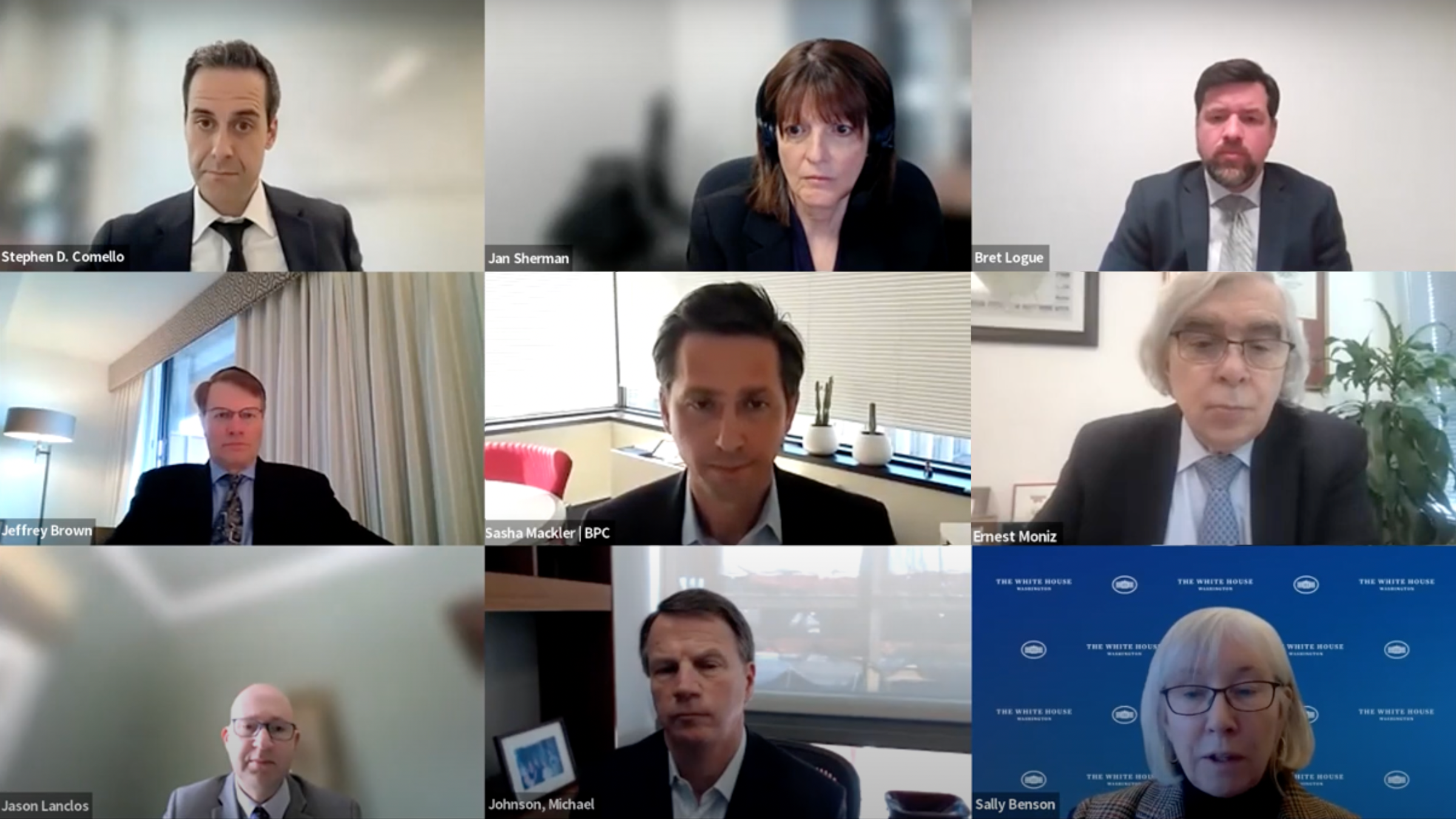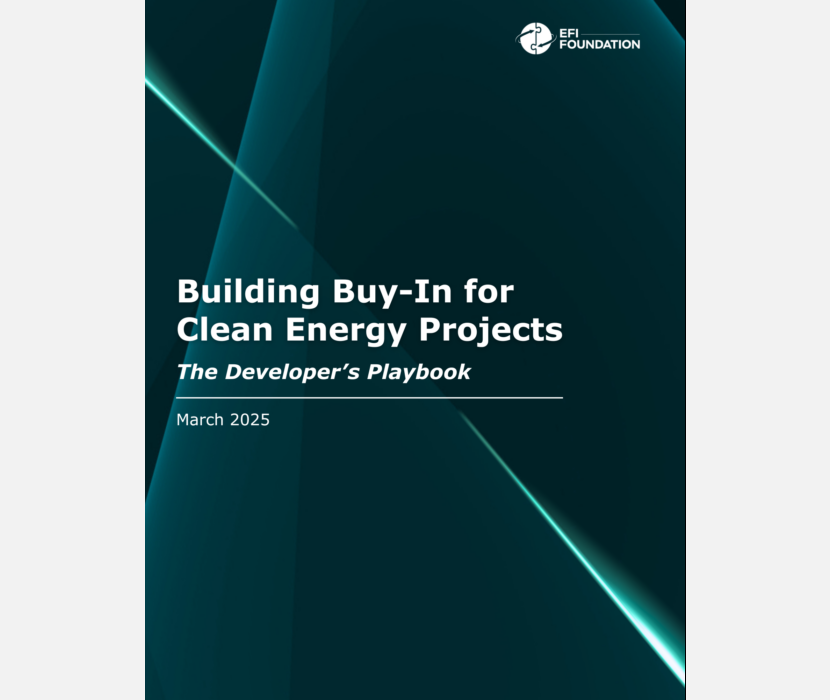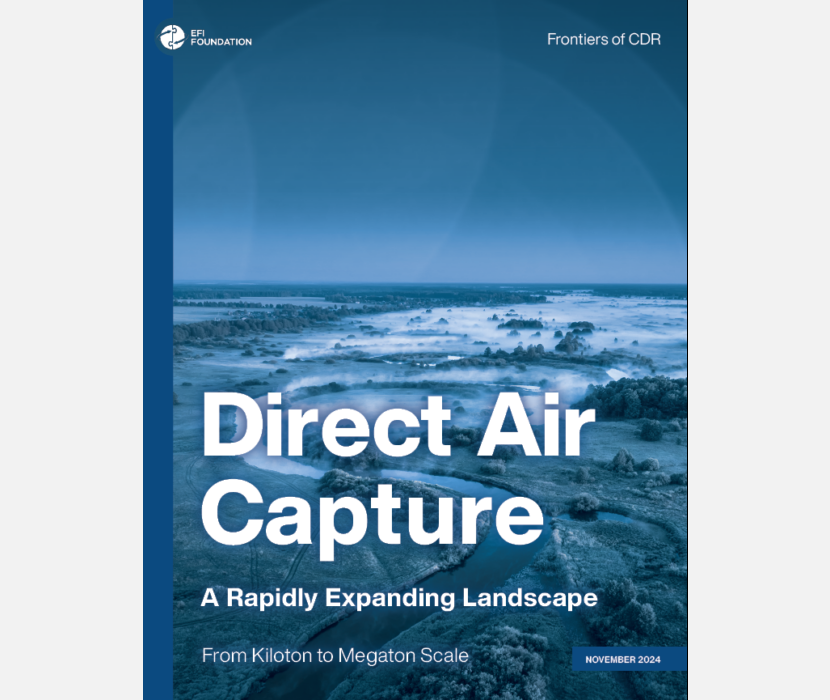Unlocking Private Capital for Carbon Capture and Storage in Industry and Power (April 2025) outlines how policy and financial support mechanisms can accelerate efforts to bring carbon capture and storage (CCS) technologies to market.
This study builds upon a 2023 report by the EFI Foundation’s Energy Futures Finance Forum (EF3) and focuses on early implementation of the new CCS funding programs and increased tax incentives in the Bipartisan Infrastructure Law (BIL) and Inflation Reduction Act (IRA). The 2025 study reviews the pace of deployment of CCS in high-emitting industries as well as how inflation and high interest rates have affected the cost of deploying CCS in new sectors.
CCS is central to a future low-carbon energy economy in the United States and globally. It is the only currently available technology that can address the carbon dioxide emissions from all forms of fossil fuels across all stationary source applications for power generation and industrial process heat. In the United States, these sectors contribute almost half of total greenhouse gas emissions annually.
The 2023 report identified a suite of complementary policy actions to jump-start CCS deployment across all major U.S. sectors of heavy industry and across various power applications. The 2023 report’s 27 recommendations organized around six major themes: complementary incentives for carbon capture in new power and heavy industry sectors; improving the effectiveness and efficiency of the Section 45Q tax credit information sharing for publicly supported projects; permitting reform; comprehensive environmental disclosure; and enhancing community support.
The principal findings from the 2025 analysis include:
- The increased Section 45Q (“45Q”) tax credit for carbon storage in the IRA has not provided additional incentive value because the increase has been fully offset by COVID-era inflation and higher interest rates for CCS in most sectors.
- The 45Q credit is adequate to facilitate bankable free-standing CCS projects in only four of the 11 industrial and power sectors that were studied. These include natural gas processing, auto-thermal reforming of natural gas in greenfield facilities, carbon capture from ethanol fermentation, and steam methane reforming of natural gas. These sectors comprise just 2.5% of total stationary emissions.
- For higher-emitting industrial and power sector applications, such as cement, steel, and natural gas combined cycle power plants, the cost of capturing and storing carbon dioxide (CO2) exceeds the value of the 45Q tax credit by up to $58/metric ton of CO2. The cost gap tops out at $90/metric ton for natural gas boilers. The shortfall for pioneering “first-of-a-kind” (FOAK) projects is even larger.
- Even in sectors where CCS projects are bankable with the 45Q credit, securing the necessary federal and state permits for pipelines and geologic storage remains a hurdle. For example, the U.S. Environmental Protection Agency (EPA) has issued permits for only eight Class VI wells for geologic storage since the inception of the Class VI rules in 2010. Applications for more than 160 wells are pending review. The new administration has signaled it plans to empower more states to oversee permitting for geologic storage, which can help accelerate project deployments.
- While there has been some forward movement in FOAK commercial-scale demonstration projects in the heavier-emitting and harder-to-abate industry sectors, this progress is being facilitated by a combination of the 45Q credit and three other policy measures. Those include U.S. Department of Energy (DOE) cost-sharing for early commercial-scale demonstration projects; state government incentives; and voluntary corporate decarbonization commitments. Layered support for more pioneering projects in more industries will be necessary to bring down costs.
The 2025 report reaffirms the recommendations in the original 2023 report and highlights several new recommendations, including that:
- Congress amend 45Q to eliminate the current restrictions on indexing the credit for inflation and consider additional bonus credits for early movers.
- The National Energy Dominance Council consider measures to coordinate and expedite federal permitting actions for CO2 pipelines across agencies and to work with the EPA to clarify the criteria and process for approvals of state permitting programs for underground CO2 storage. The Trump administration should also work with Congress if additional legislative authority is needed to achieve this objective.
- DOE fully implement current BIL and IRA research, development, and demonstration (RD&D) funding authorities. The agency also must enable more flexible public-private partnerships and increase information sharing from commercial-scale demonstration projects so more participants can learn from federally funded projects. DOE also should consider additional targeted CCS demonstration projects in other industrial sectors where cost reductions are feasible.
- States consider expanding existing clean energy portfolio goals, requirements, and financial incentives to include CCS.
Related Content
(Share this post with others.)







